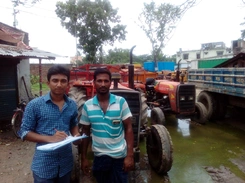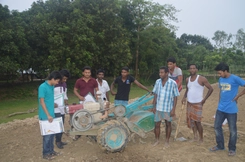Bangladesh


Bangladesh is a low-middle income country and one of the top (4th) rice producing country of the world. Historically, the majority of the population is engaged in agriculture (45.1%). Bangladesh is one of the most populated countries in the world. The country still faces a high labor demand and farm wages are shooting up day by day. The mix of increasing job opportunities in manufacturing sectors, higher wages, and higher remittances can make a major contribution to poverty reduction. The poverty rate dropped to 18.5 percent in 2010 from 44.2 percent in 1991. The majority of the population lives in rural areas and is involved in agricultural activities, i.e. rice production. Farm wages increase but the impact of increasing farm wages on rural household is still unrevealed. Additionally, food grain prices are erratic in nature, especially the rice price. As labor costs in crop production are increasing, farmers look for alternative ways of saving labor. The major focuses of the research in Bangladesh are interlinkages between farm wages, food prices and food security of the rural population. Besides farm size expansion, agricultural mechanization has to be advanced in order to reduce the labor cost. Farmers, government agencies and development cooperation partners continue to show interest in the use of agricultural machinery. The proper introduction of agricultural machinery services may have some potential to reduce the cost of various stages of the cultivation process, for example weeding and harvesting. Disentangling the interlinkages between the food and labor market and its impact on farm mechanization and food security of the rural households is an important issue for the policy development perspective. Therefore, we also investigate the impact of rising farm wages on the adoption of farm machinery including the operation of the rental market of farm machinery in the rural settings (machine owners and user perspective).



